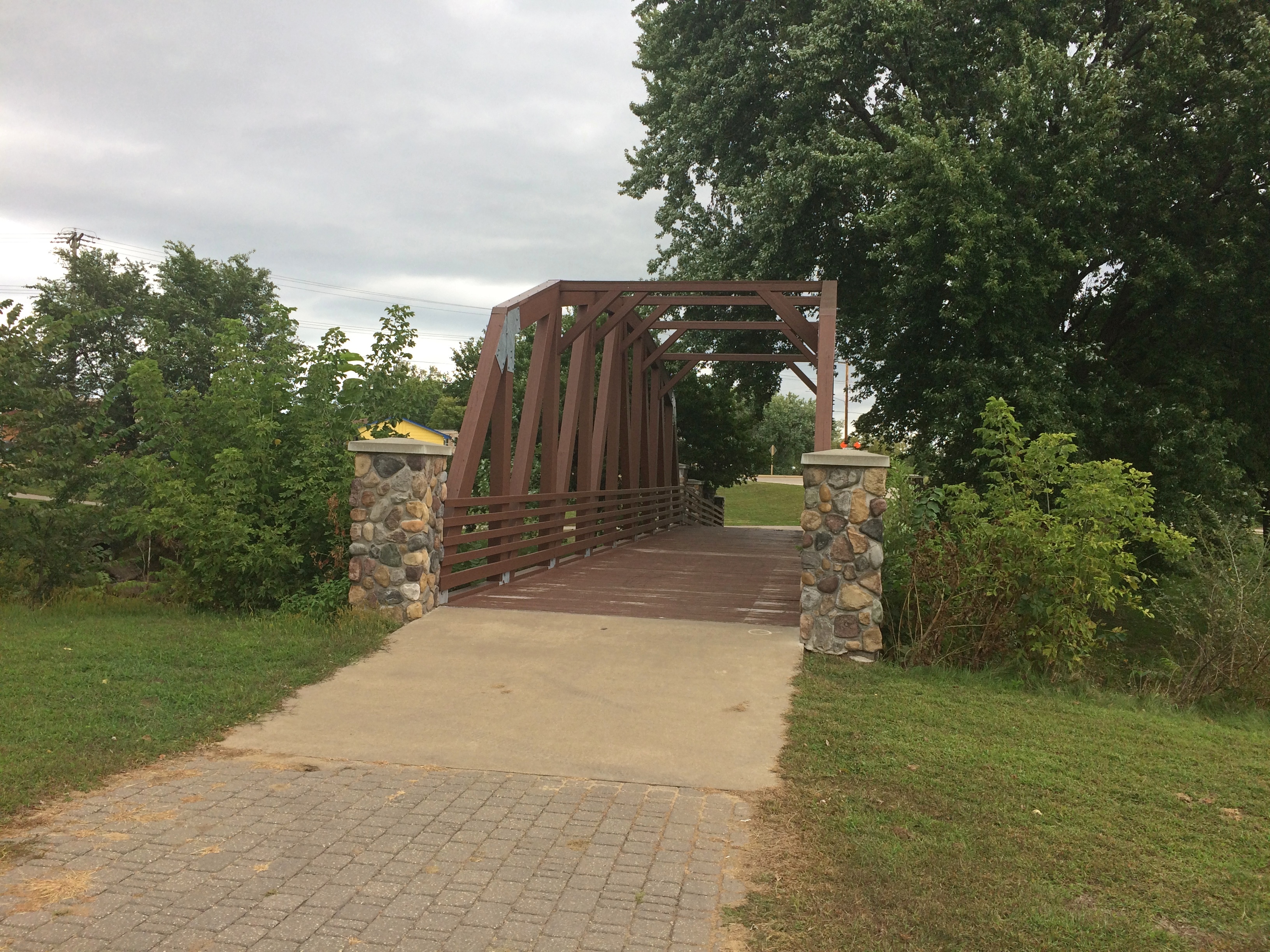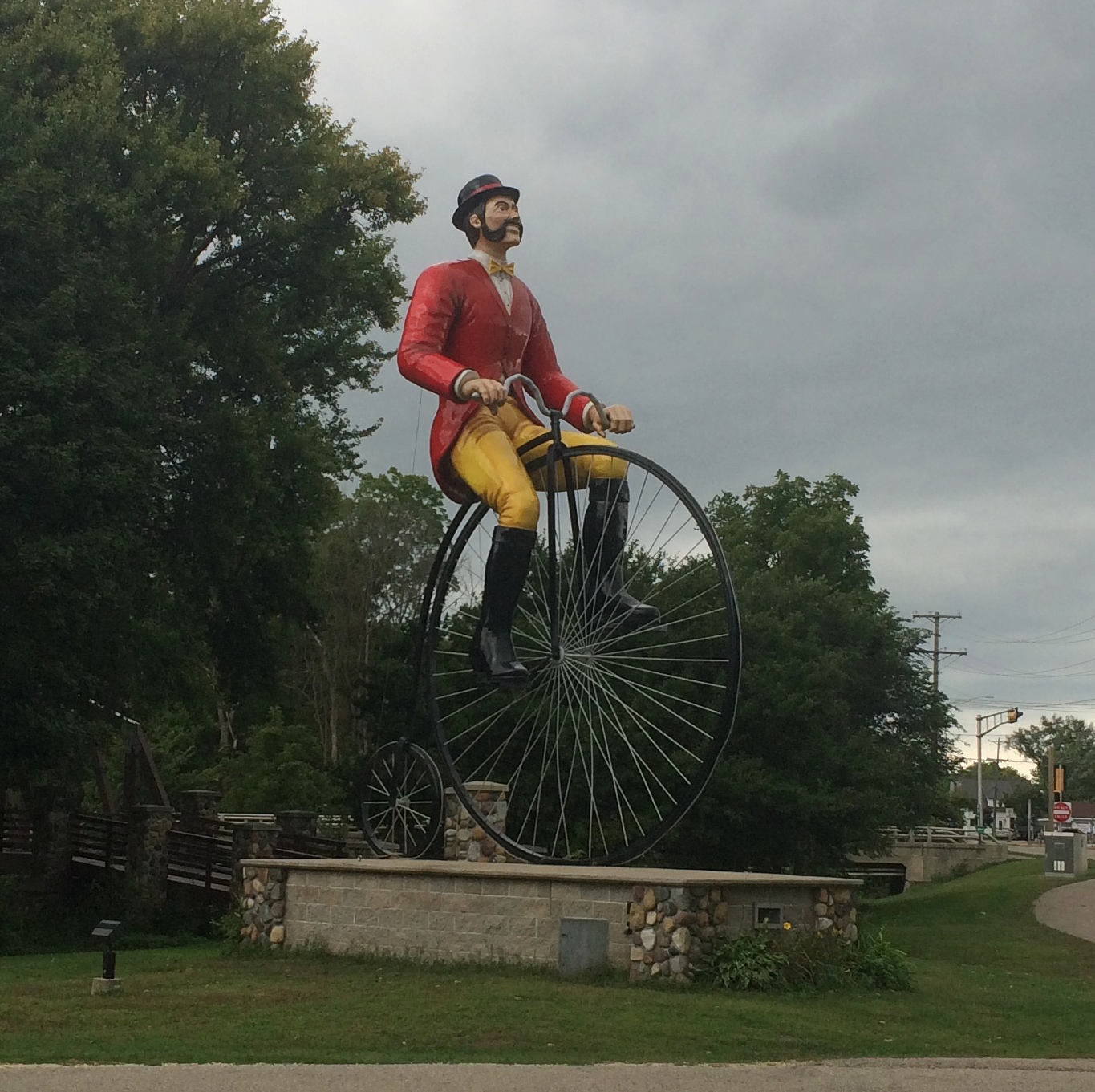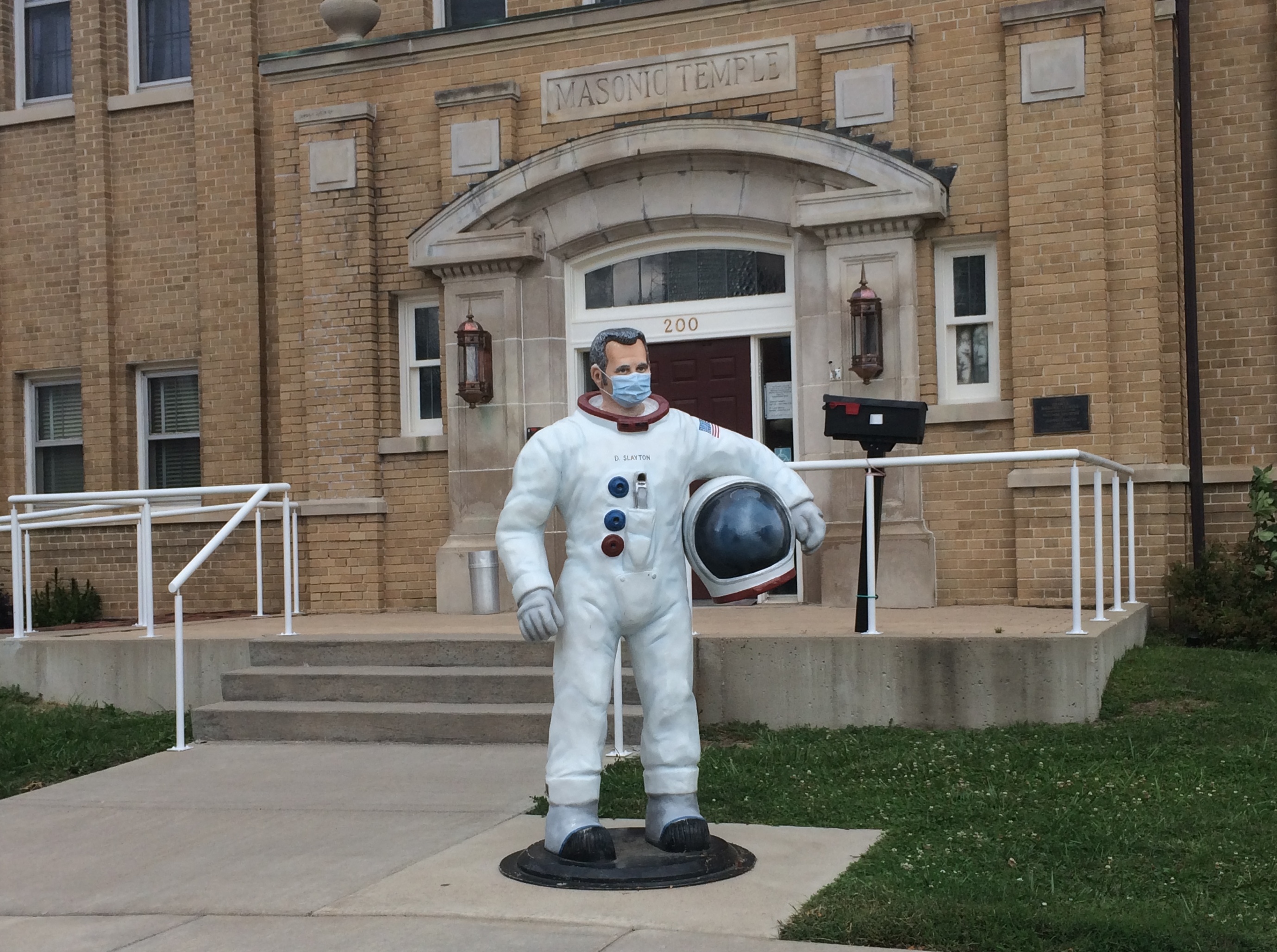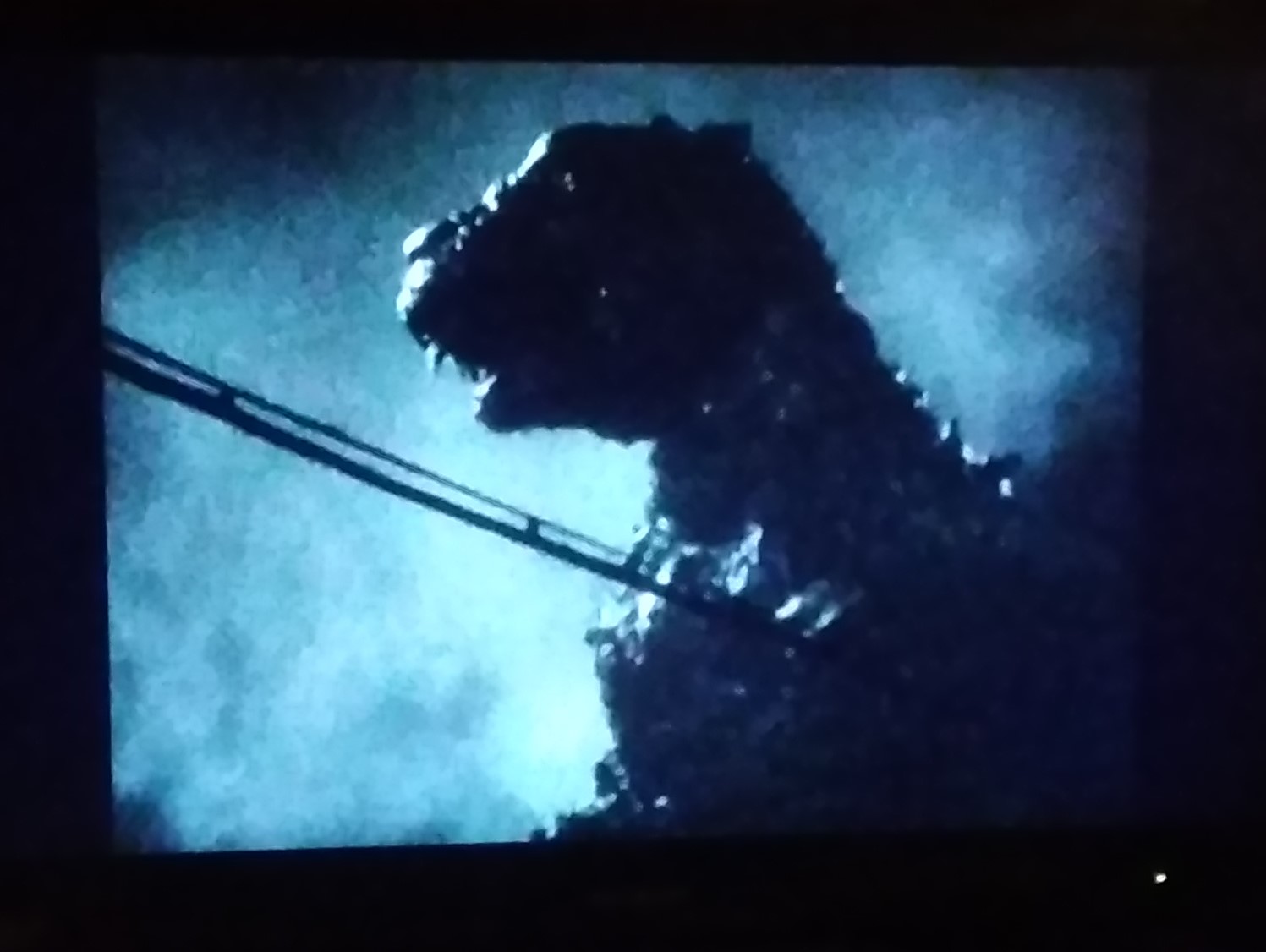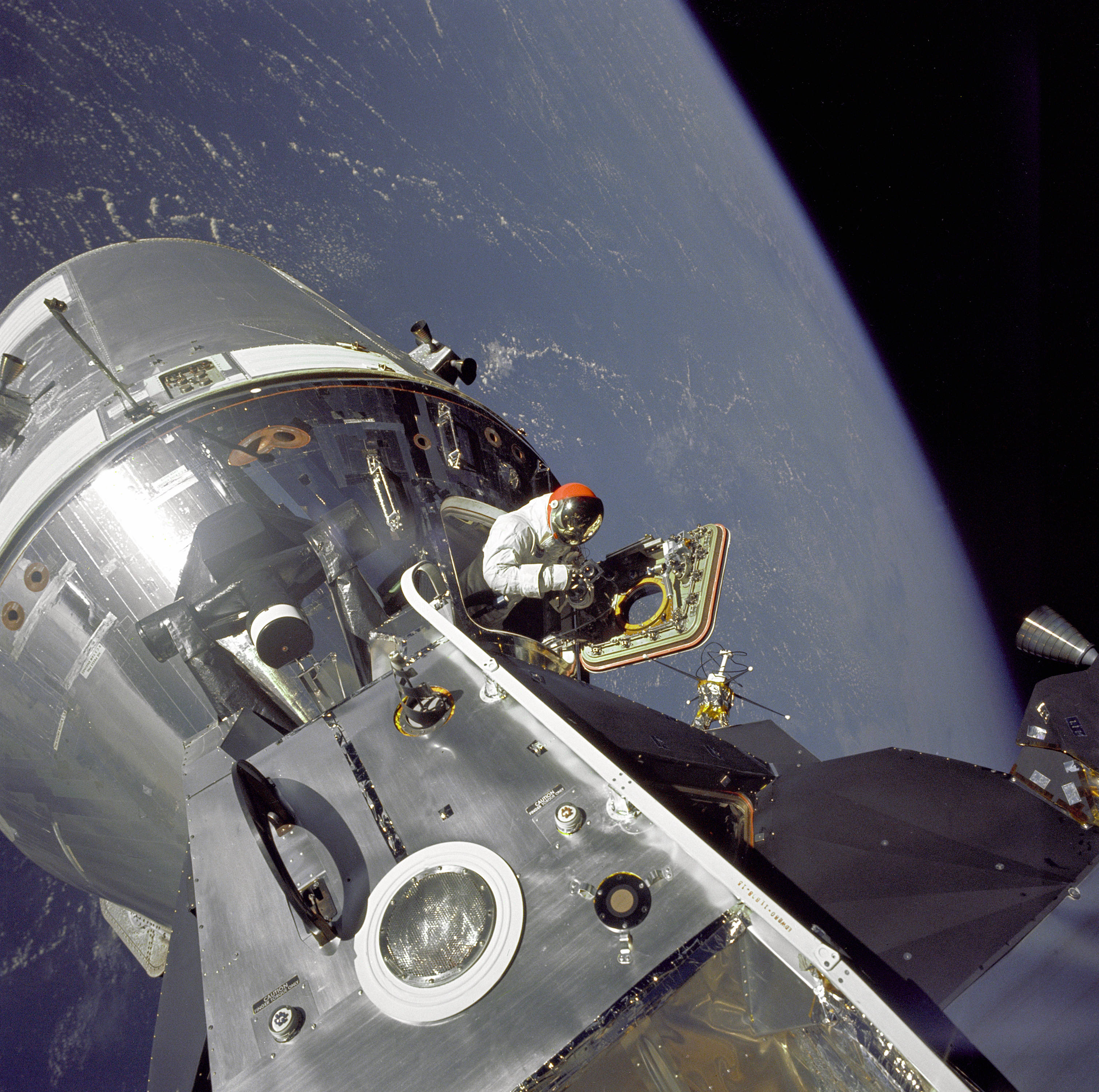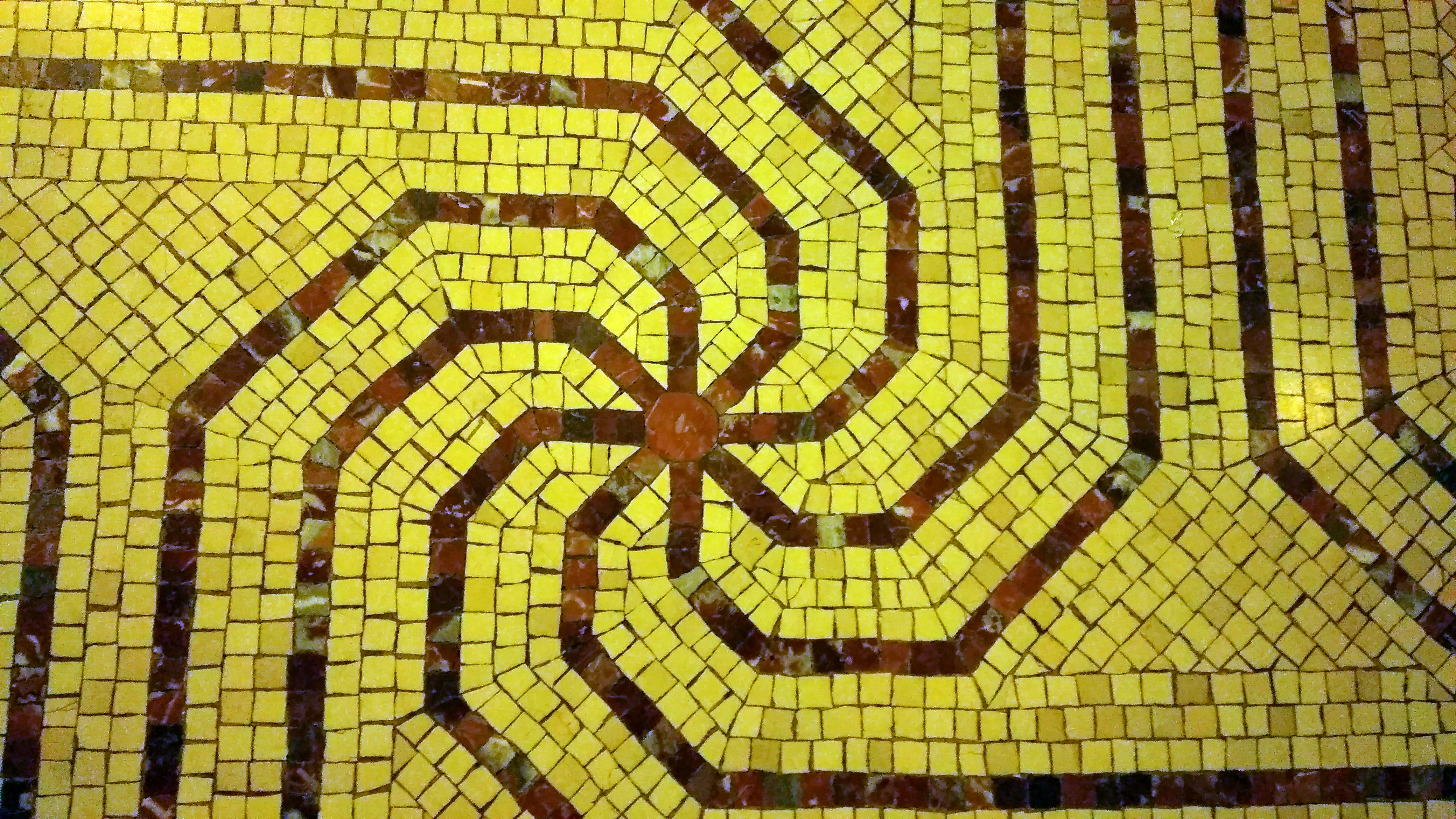Sunny day, but not much meltage. Bitter cold night ahead, and another half-foot of snow forecast for the weekend. Before that, we’ll get Thai takeout at Ann’s request on Friday, and a birthday pie, to make staying at home more pleasant.
Earlier this month, when we were in Naperville, we came across a small park: Central Park. Among other things, there’s a weatherworn obelisk to memorialize local soldiers from the Black Hawk War, the Mexican War, the Civil War and the Spanish-American War. It looked like new wars had been chiseled in as time passed.
Not far from that was a Civil War cannon, looking pretty new, because it was refurbished in this century.
 It’s a Confederate cannon.
It’s a Confederate cannon.
 A prize of war, in other words, formerly shot off by the people of Naperville for “Independence Day, parades and other civic activities” in a less safety-conscious (-obsessed?) time. That’s what we could use a little more of in our time, though I suppose in some places edgy folks might mistake it for hostile gunfire, and maybe they’d be right to.
A prize of war, in other words, formerly shot off by the people of Naperville for “Independence Day, parades and other civic activities” in a less safety-conscious (-obsessed?) time. That’s what we could use a little more of in our time, though I suppose in some places edgy folks might mistake it for hostile gunfire, and maybe they’d be right to.
Willard Scott Jr. was this fellow, no relation to the weatherman, it seems. Among other things, this Willard Scott marched through Georgia, doing his bit to invent modern total war.
Shucks. No evidence of life in the clouds of Venus.
Google “Venus floating platform” and one of the first hits is about the Venus Atmospheric Maneuverable Platform (VAMP) at the Northrop Grumman web site. My estimation of that company just went up a notch. It’s at least thinking about flying a plane over Venus.
“The Venus Atmospheric Maneuverable Platform (VAMP) air vehicle is an aeroshell-less hypersonic entry vehicle that transitions to a semi-buoyant, maneuverable, solar-powered air vehicle for flight in Venus’ atmosphere,” NG says. “VAMP AV will be transported to Venus by a carrier/orbiter spacecraft… It is then released and enters the atmosphere, floating down toward the planet almost like a falling leaf.
“During the flight phase, the AV flies in the Venus upper- and mid-cloud layers and collects science data for transmission to Earth. VAMP AV will be capable of orbiting the planet for a long duration — up to a year.”
Of course, the company is no stranger to space, having built the Lunar Module and Pioneer 10, just to name two marquee projects. These days its marquee project is the James Webb Space Telescope, which can’t get into space fast enough, as far as I’m concerned.
Recently I’ve been getting press releases that say these sorts of things:
X will teach you how to:
Reframe your life experiences as growth opportunities
Rewire your mind-set and embrace spirituality as a lifestyle
Connect to your higher self and integrate healthy lifestyle practices
Tap into universal energy and transmute pain into power
Manifest your new reality and claim your authenticity
Change the world!
***
For your upcoming stories on female disruptors, please consider Y, Founder of Z, helping visionaries reconnect to SOUL, and Live FREE to become their most successful, influential and positively impactful versions. Y teaches women to embody the energy of money and become a vibrational match so it flows consistently and predictably.
Hm. My name seems to be drifting onto all sorts of lists, at some distance from commercial real estate. Though I do like that phrase, “energy of money,” and the idea of it flowing “consistently and predictably” certainly has appeal.




